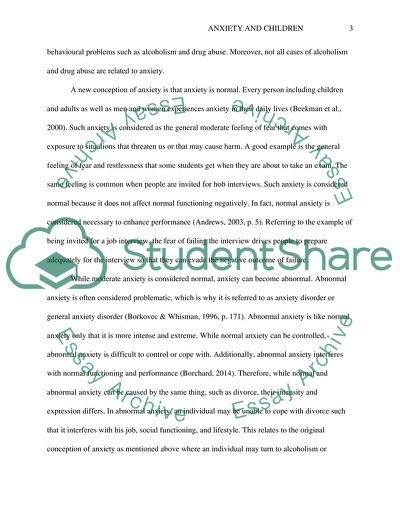Cite this document
(Anxiety and Children Essay Example | Topics and Well Written Essays - 2000 words, n.d.)
Anxiety and Children Essay Example | Topics and Well Written Essays - 2000 words. https://studentshare.org/psychology/1871425-anxiety-and-children
Anxiety and Children Essay Example | Topics and Well Written Essays - 2000 words. https://studentshare.org/psychology/1871425-anxiety-and-children
(Anxiety and Children Essay Example | Topics and Well Written Essays - 2000 Words)
Anxiety and Children Essay Example | Topics and Well Written Essays - 2000 Words. https://studentshare.org/psychology/1871425-anxiety-and-children.
Anxiety and Children Essay Example | Topics and Well Written Essays - 2000 Words. https://studentshare.org/psychology/1871425-anxiety-and-children.
“Anxiety and Children Essay Example | Topics and Well Written Essays - 2000 Words”. https://studentshare.org/psychology/1871425-anxiety-and-children.


